This document discusses functional programming concepts including:
- Functional programming uses functions as the main abstraction and restricts side effects.
- Pure functions have no side effects and depend only on their arguments. This enables referential transparency.
- Referential transparency allows expressions to be replaced with their values without changing program behavior.
- The document provides an example of refactoring an impure Scala function to separate pure and impure parts for testability.


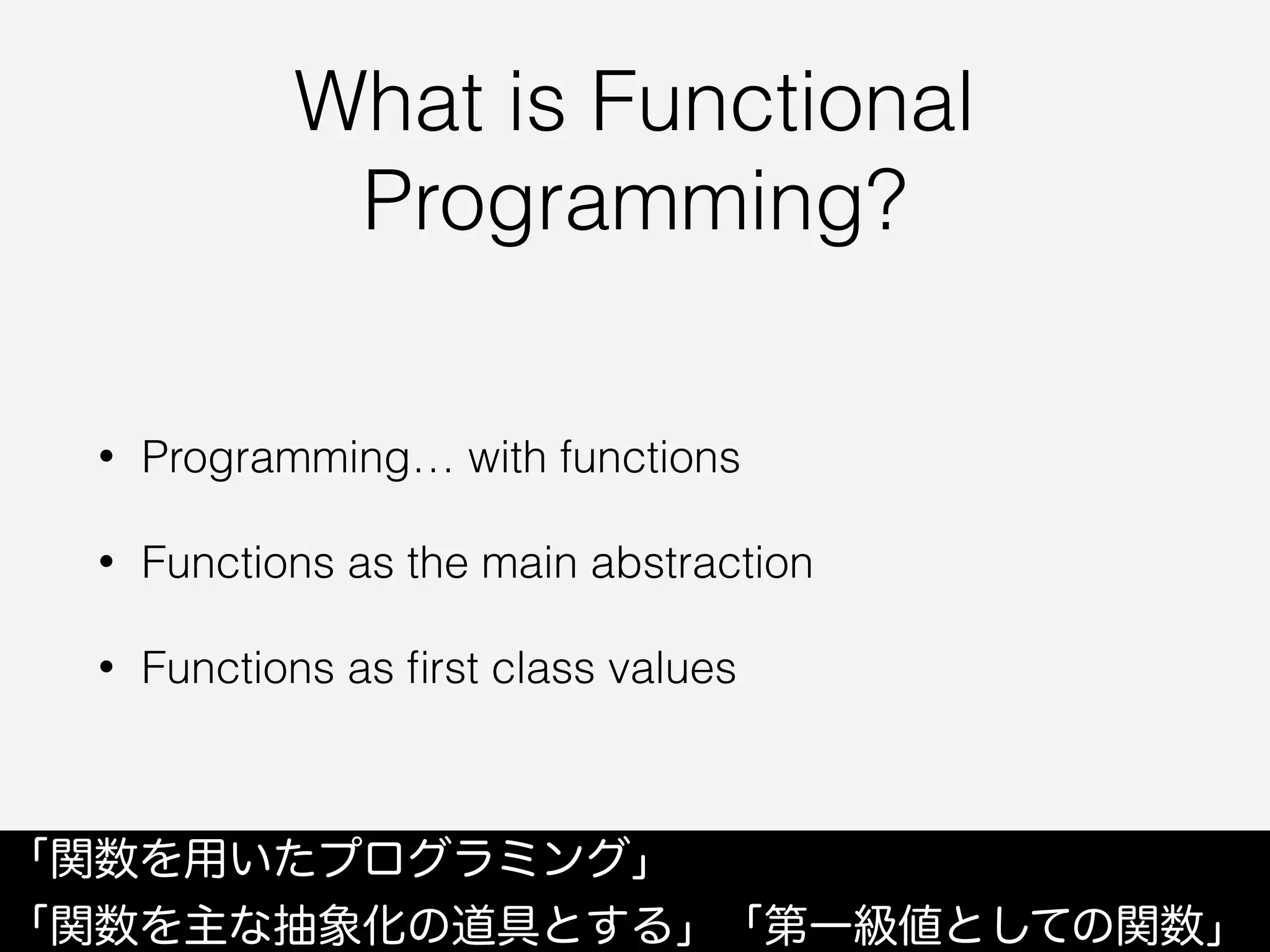

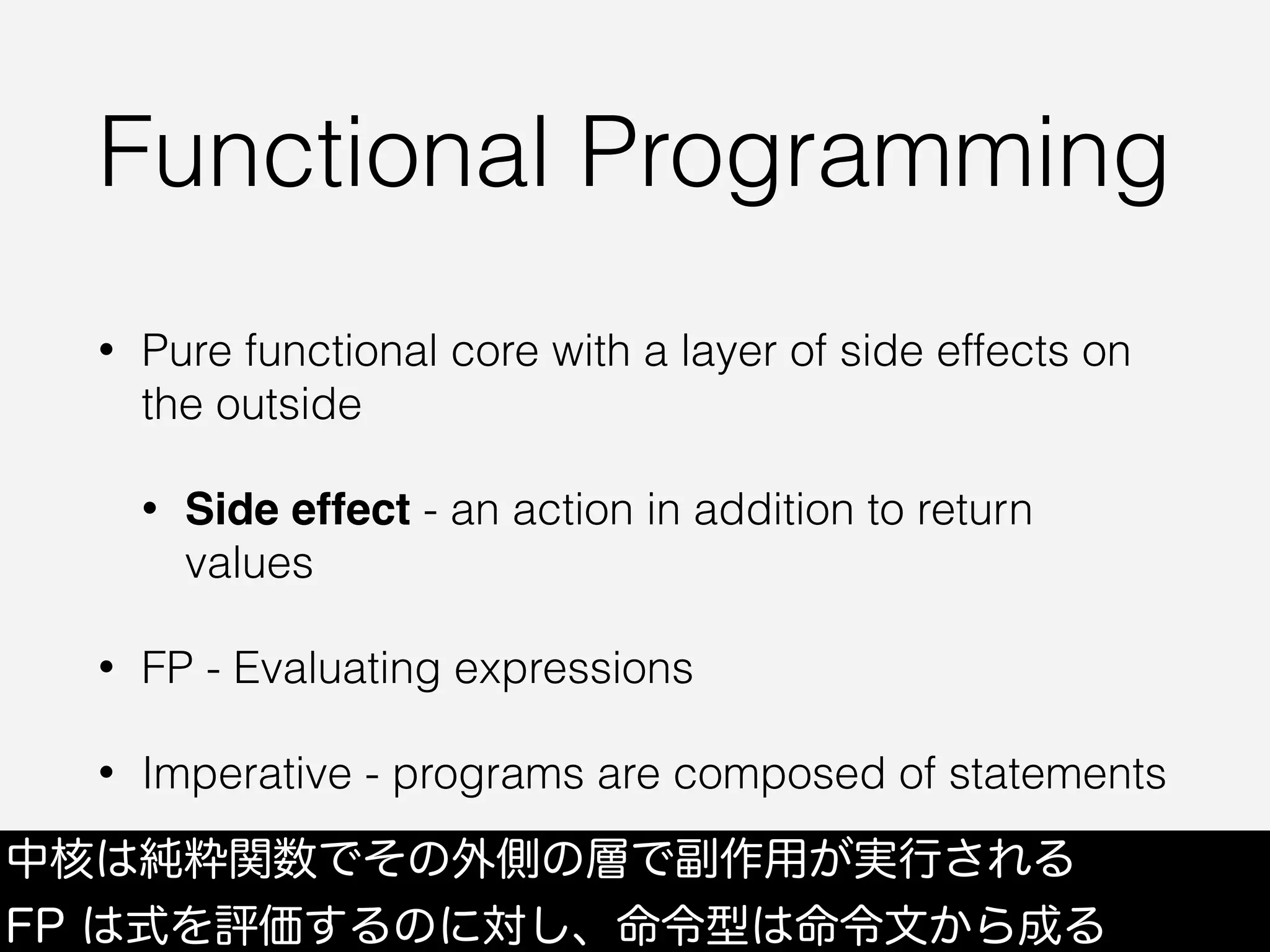

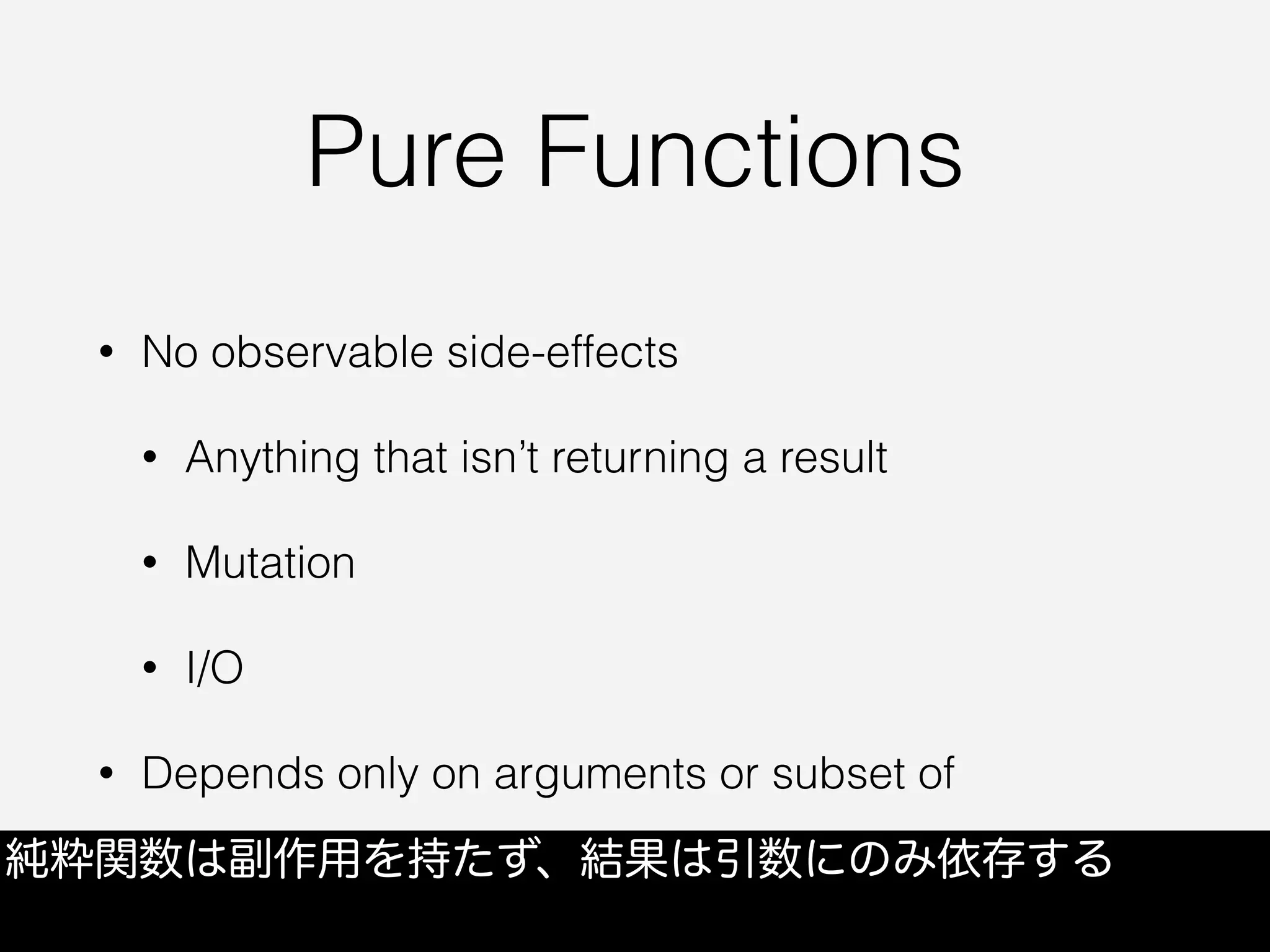
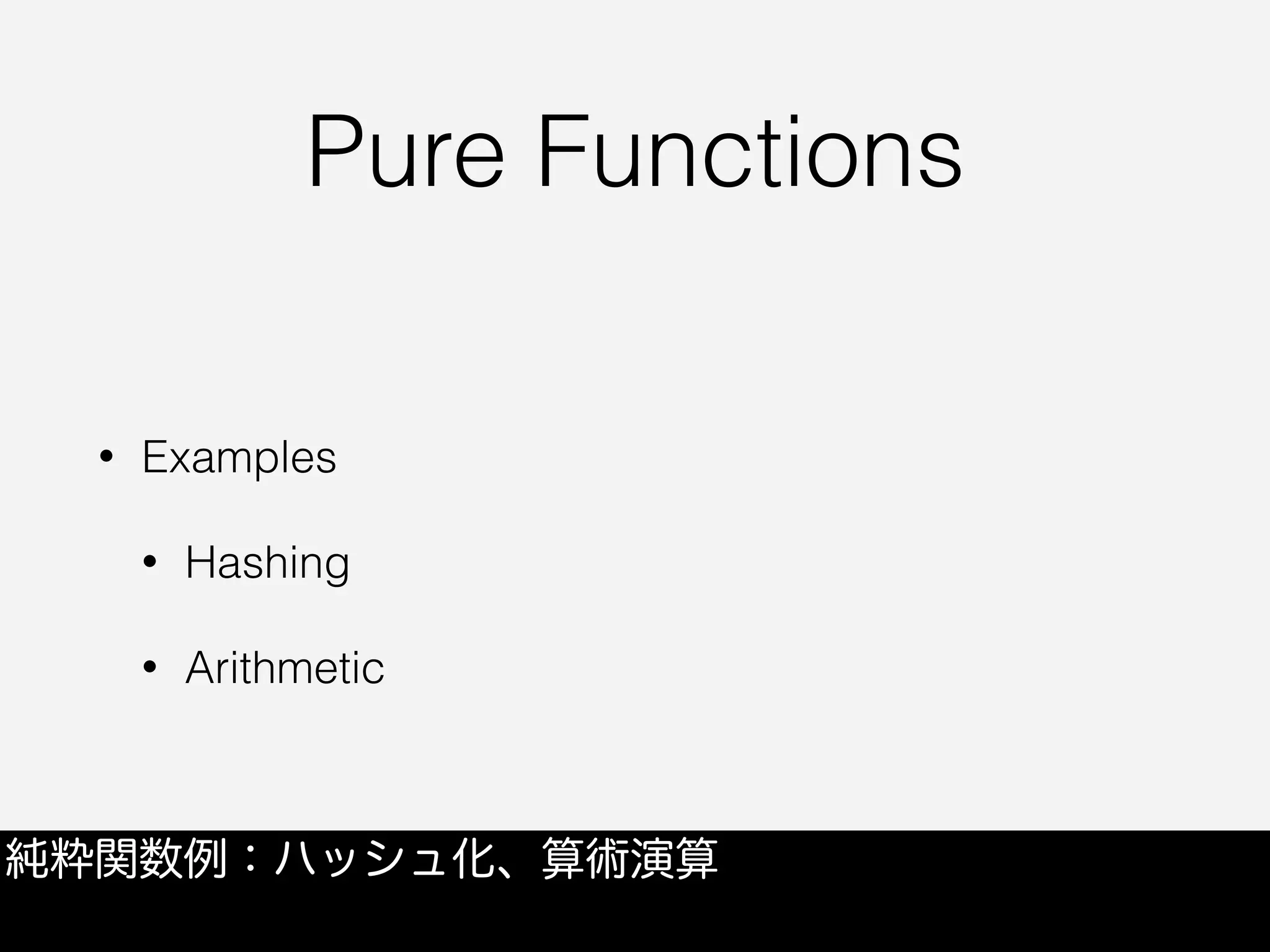
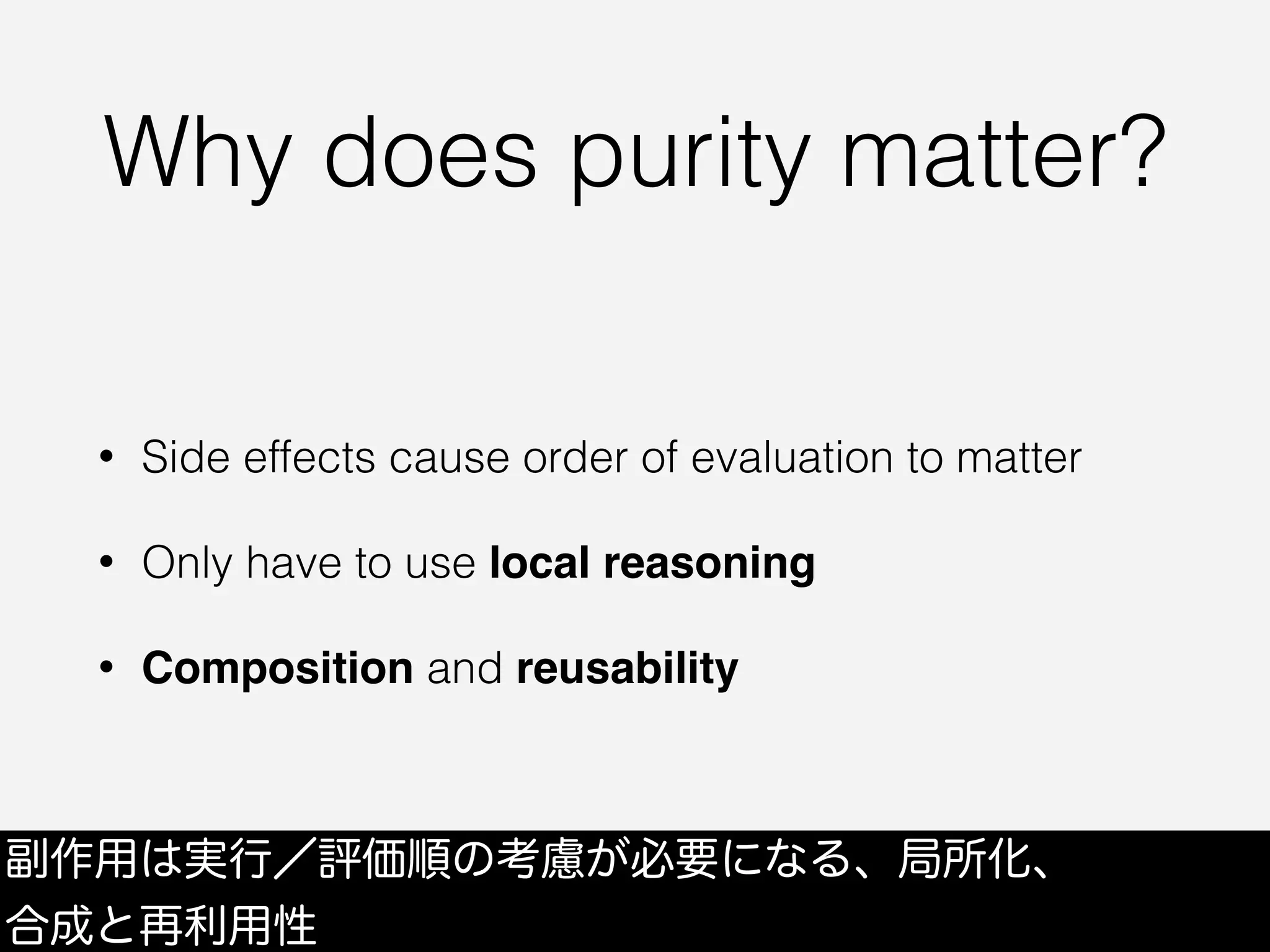
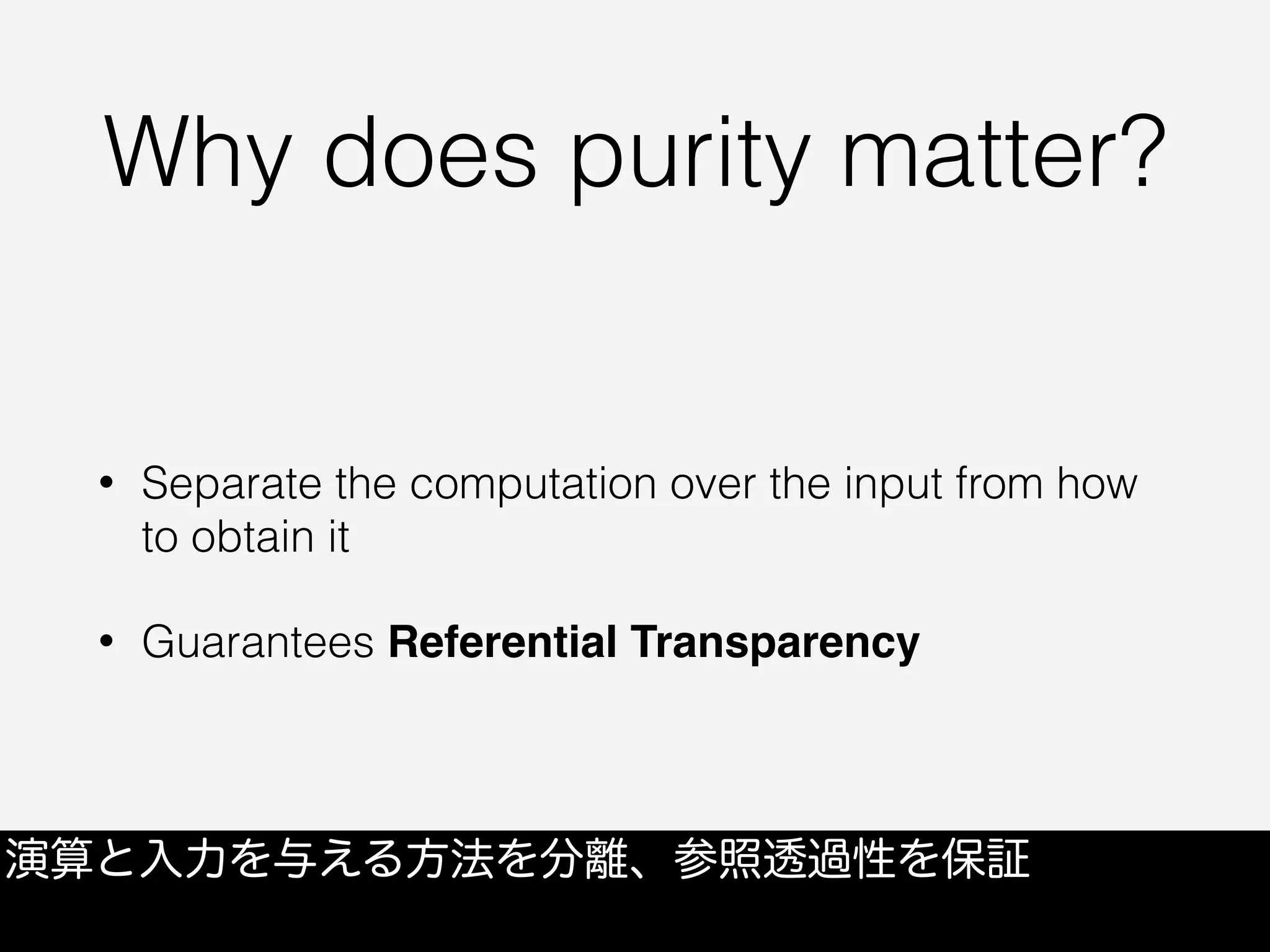
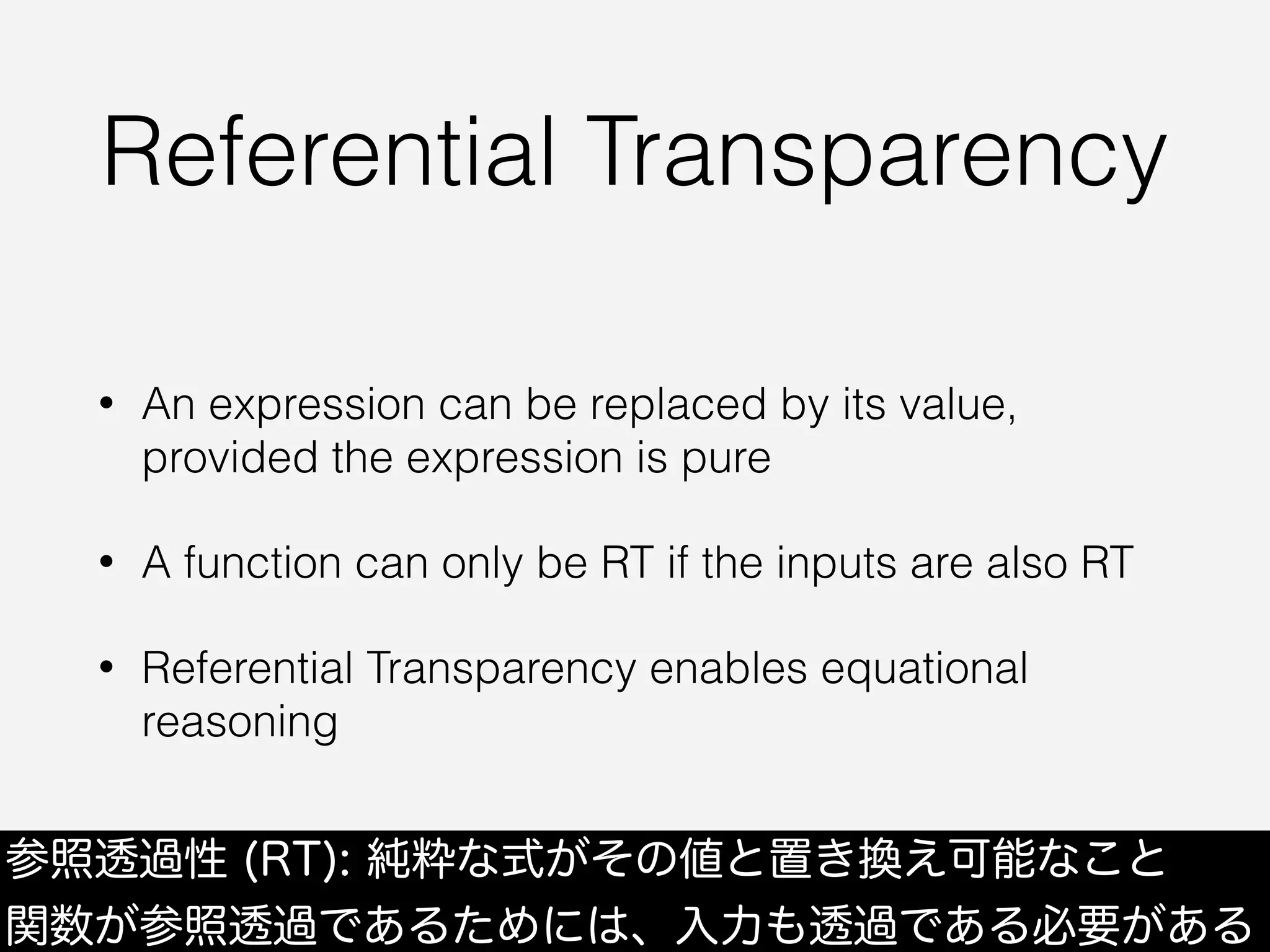
![Substitution Model
def greaterThan5(i: Int): Option[Int] =
if(i > 5) Some(i) else None
def createMessage(): String =
greaterThan5(3).map(x => "Was greater than 5") getOrElse "Was less than or equal to 5"
def createMessage2(): String =
(if(3 > 5)
Some(3)
else
None).map(x => "Was greater than 5") getOrElse "Was less than or equal to 5"
def createMessage3(): String =
None.map(x => "Was greater than 5") getOrElse "Was less than or equal to 5"
置き換えモデル](https://image.slidesharecdn.com/fpforall-160130065225/75/Functional-Programming-For-All-Scala-Matsuri-2016-12-2048.jpg)
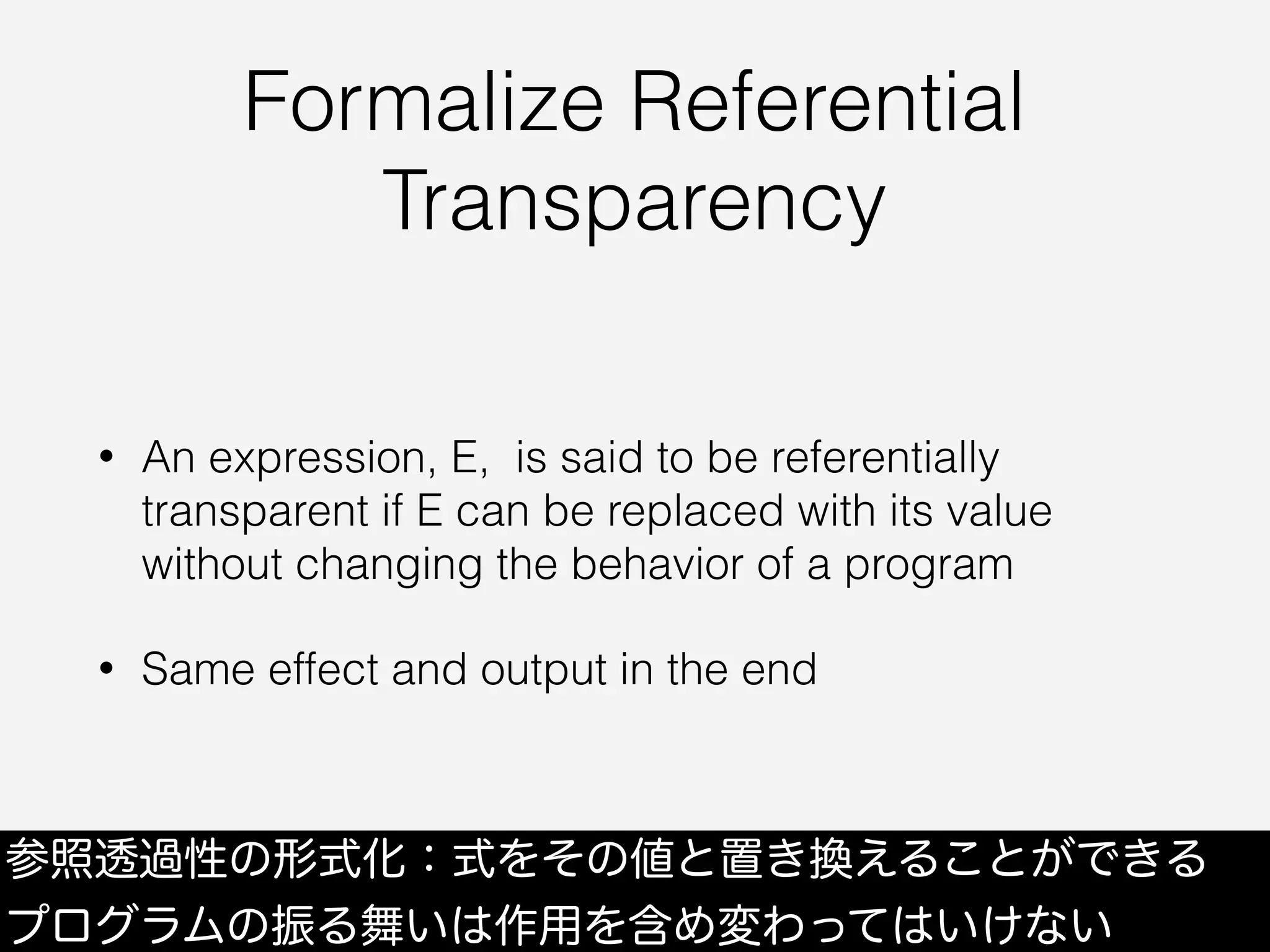
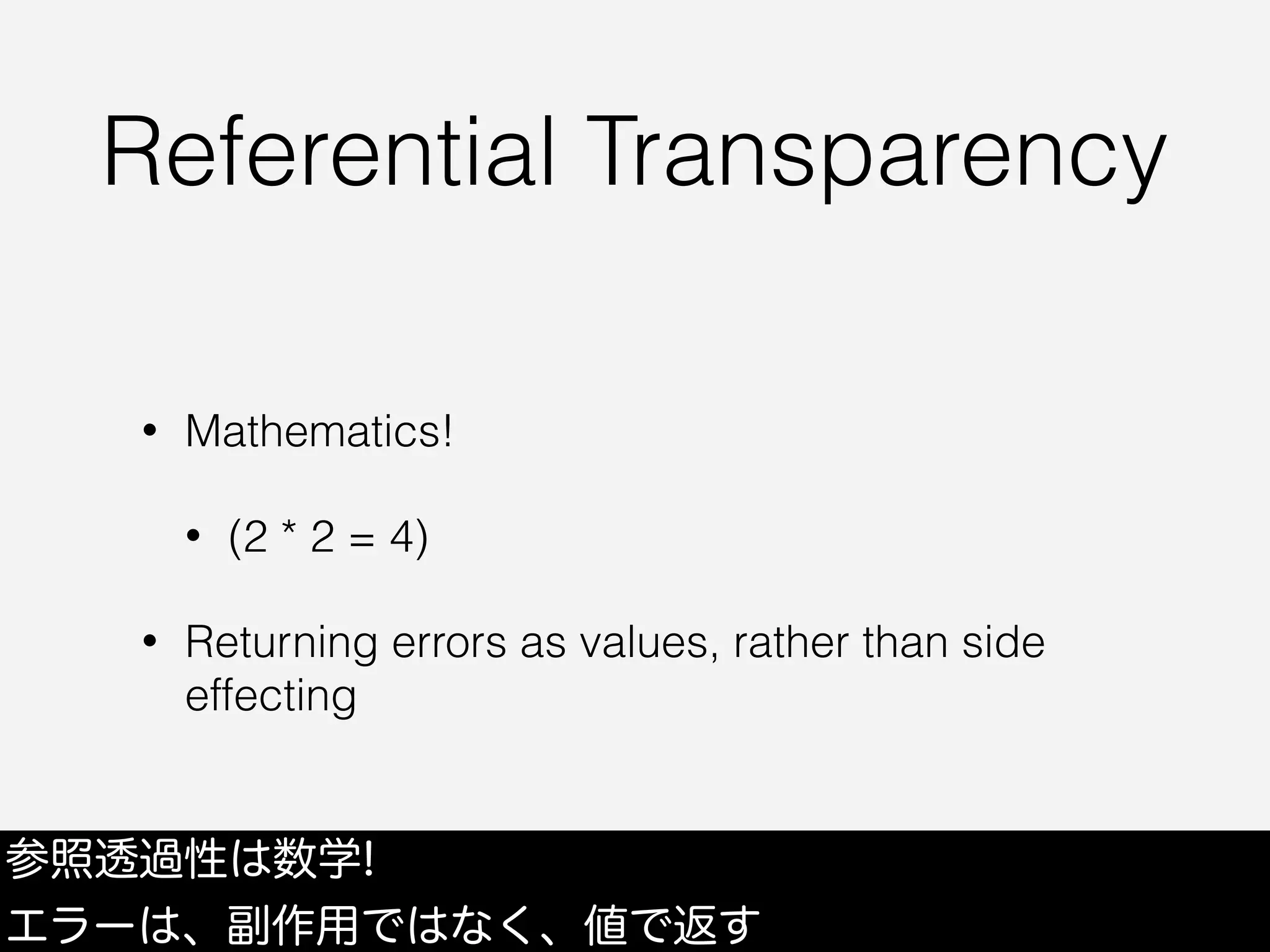
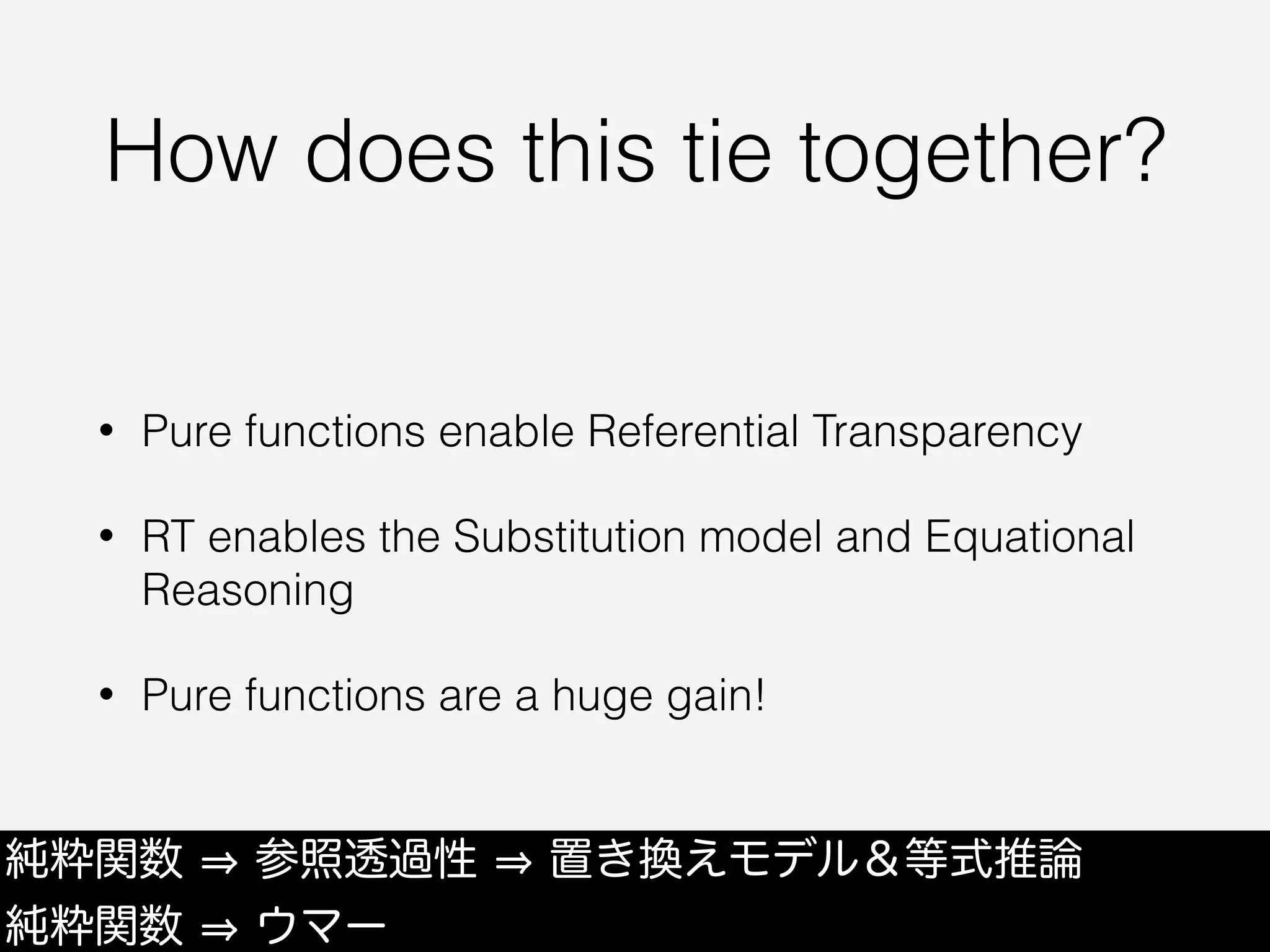
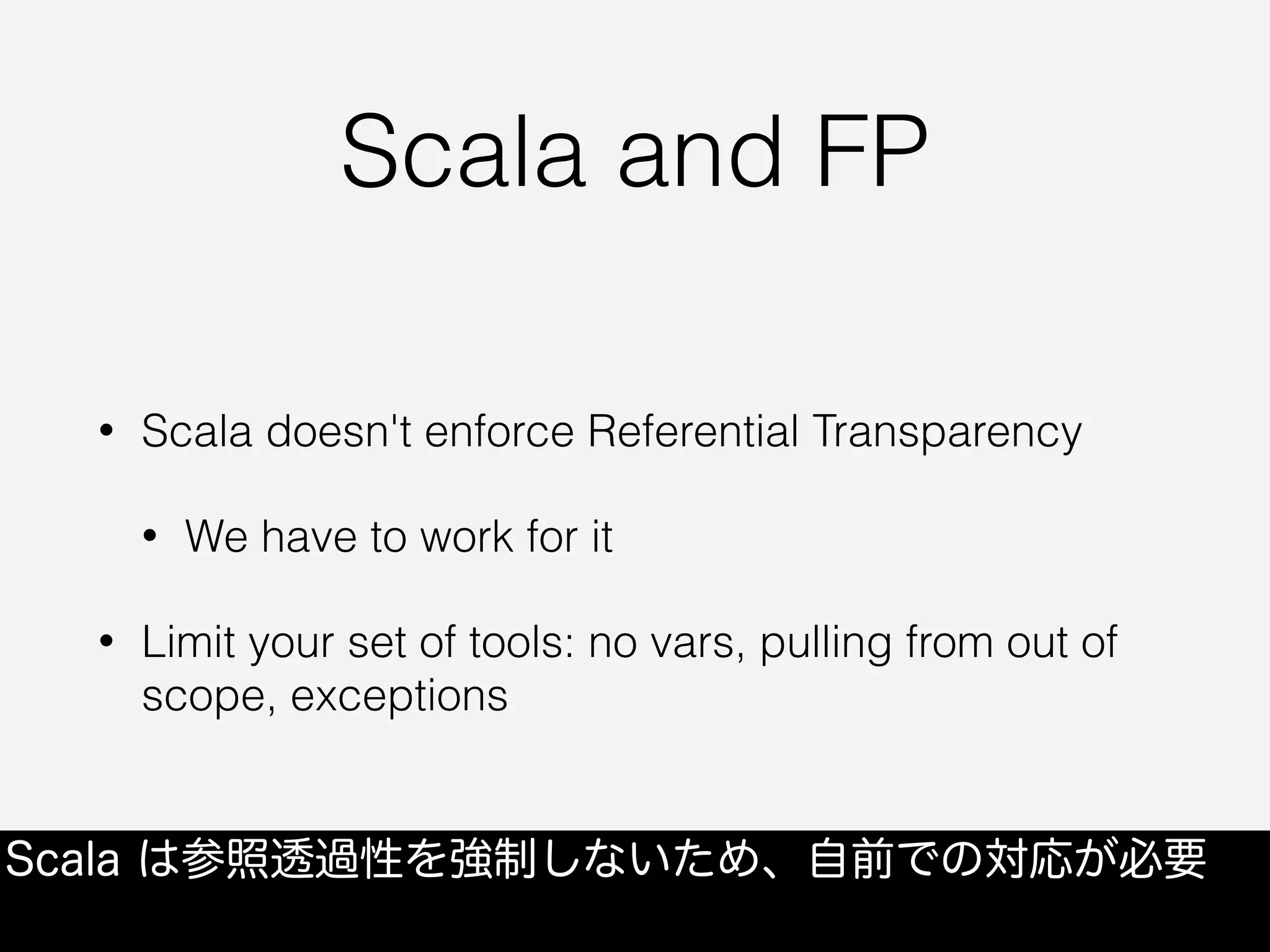
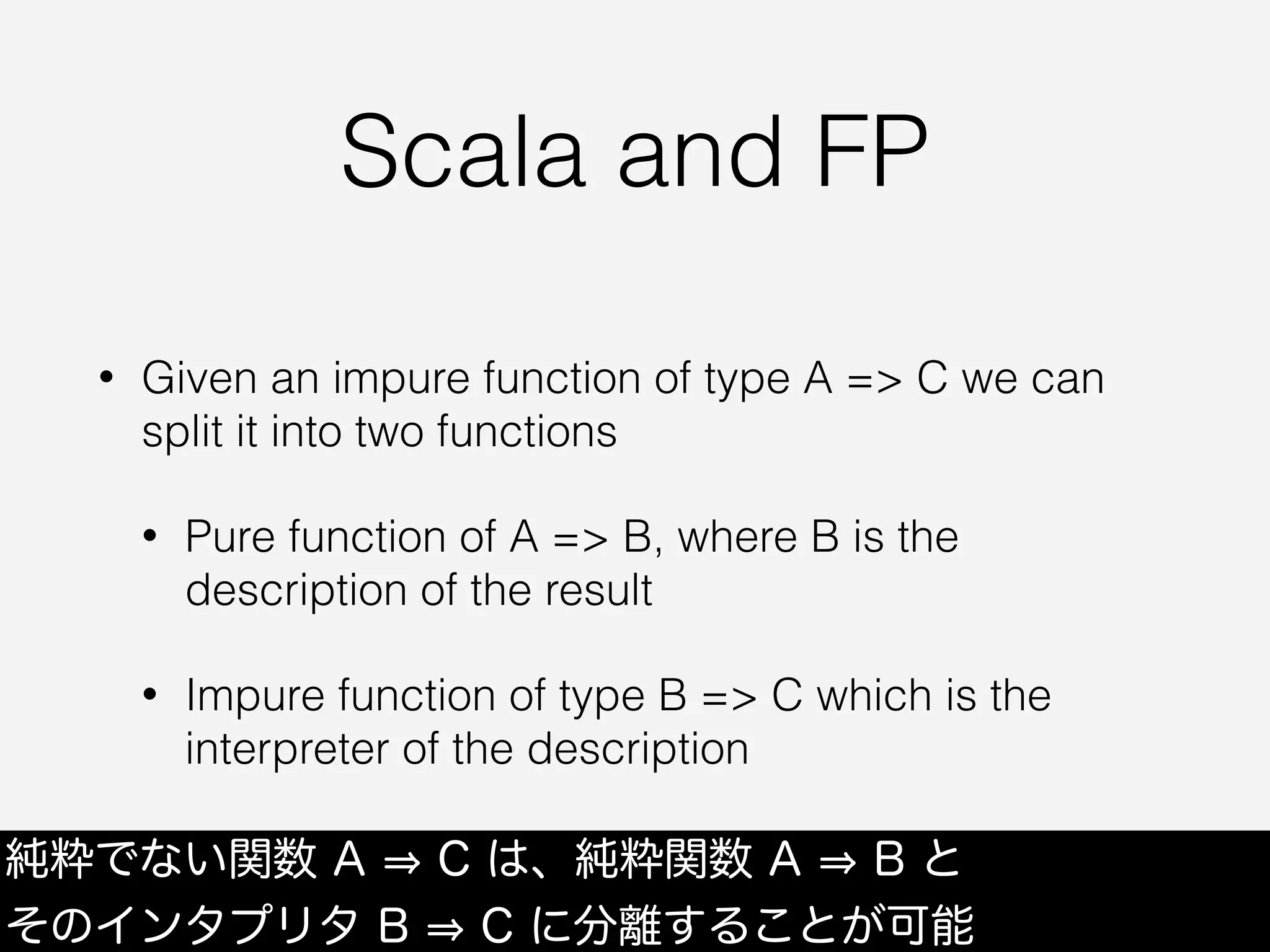
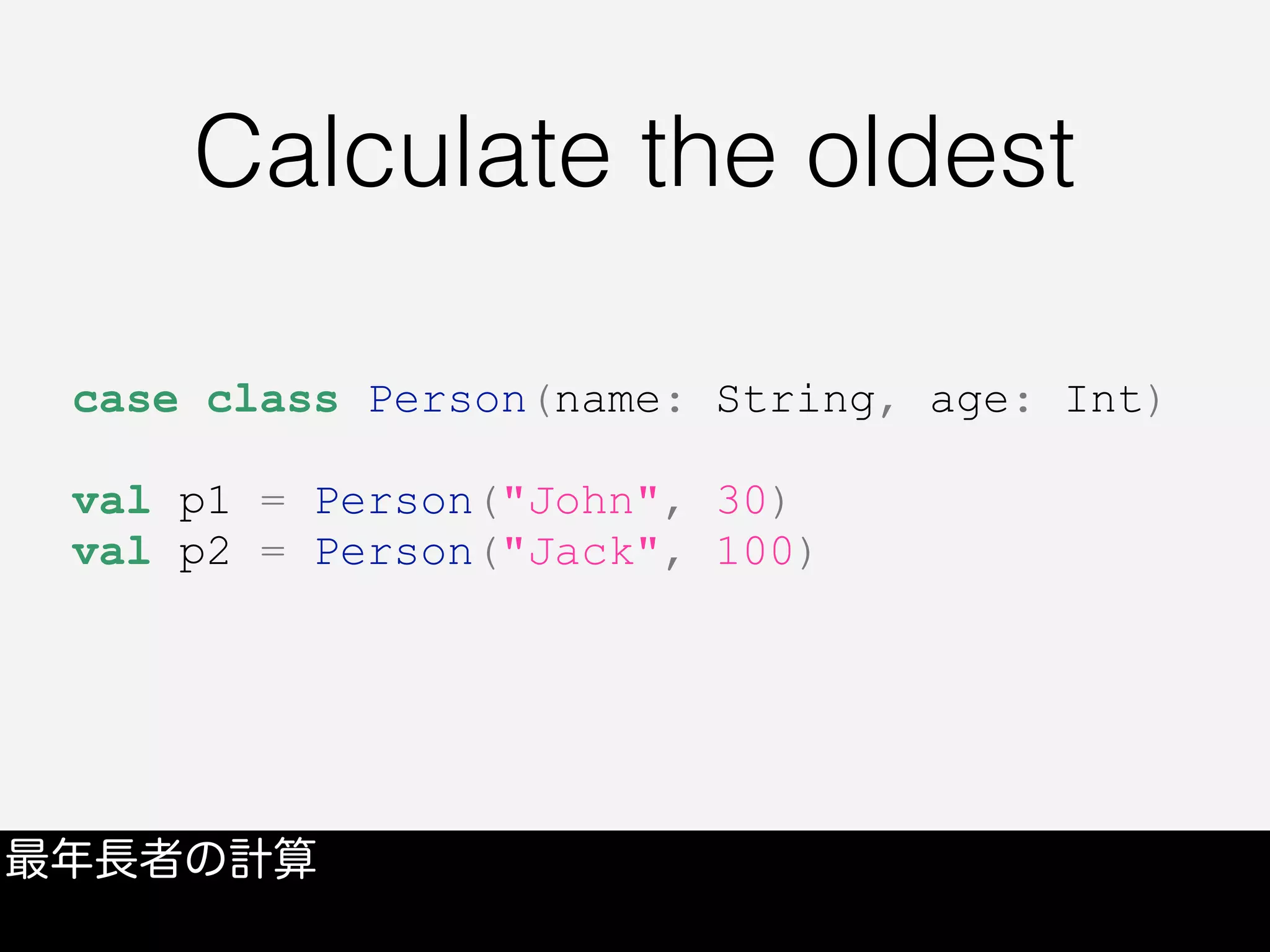
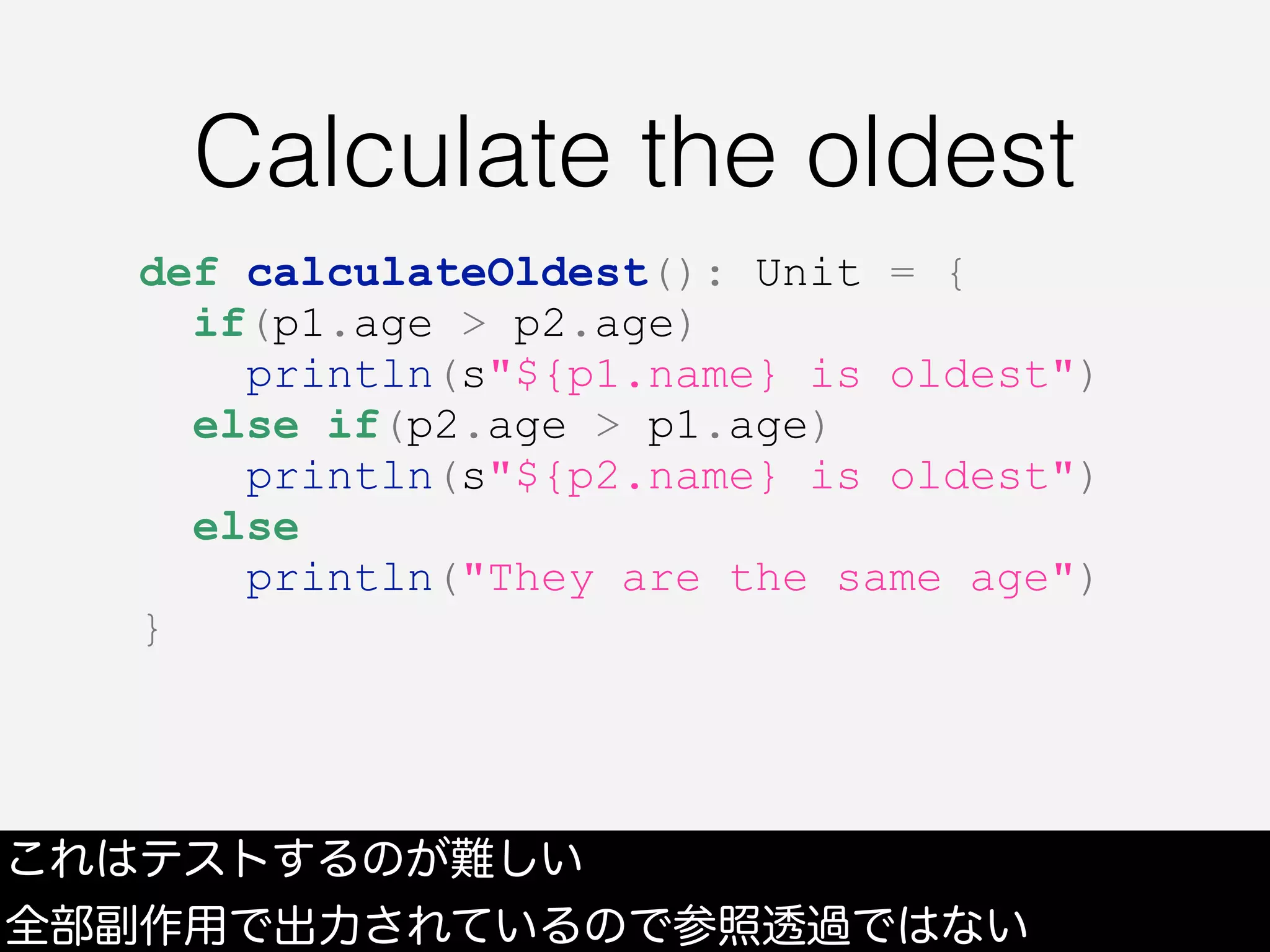
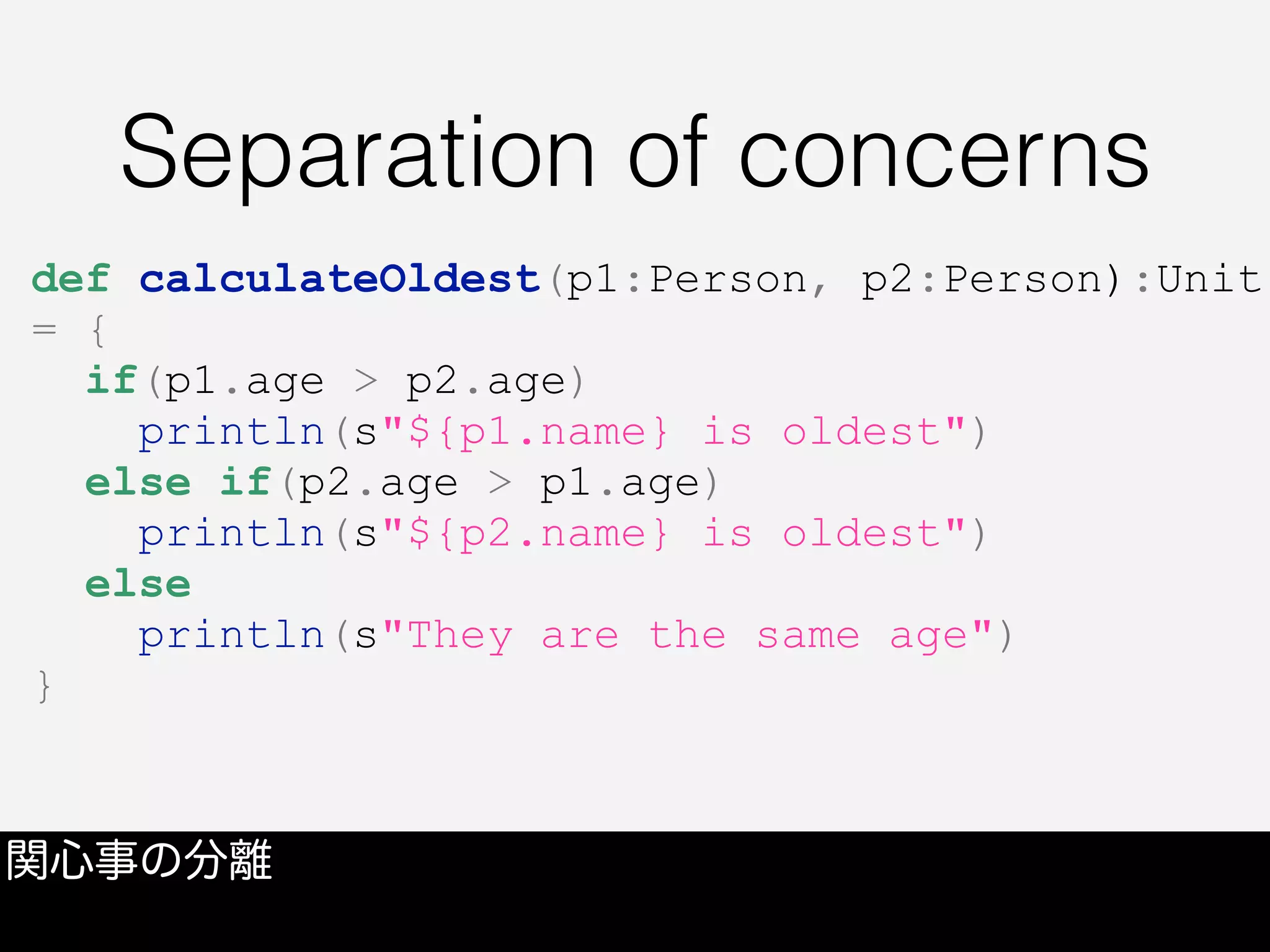
![Return values
戻り値を使うことでテストしやすくなった
def calculateOldest(p1: Person, p2: Person):
Option[Person] =
if(p1.age > p2.age)
Some(p1)
else if(p2.age > p1.age)
Some(p2)
else
None](https://image.slidesharecdn.com/fpforall-160130065225/75/Functional-Programming-For-All-Scala-Matsuri-2016-21-2048.jpg)
![We can still split more
さらに細かく分ける
def result(maybePerson:Option[Person]): Unit =
maybePerson match {
case Some(Person(name, age)) =>
println(s"${p.name} is oldest")
case None =>
println("They are the same age")
}](https://image.slidesharecdn.com/fpforall-160130065225/75/Functional-Programming-For-All-Scala-Matsuri-2016-22-2048.jpg)
![A pure function core
これでコアが純粋関数になった
def calculateOldest(p1: Person, p2: Person):
Option[Person]
def result(maybePerson: Option[Person]):
String =
maybePerson.map {
case Person(name, age) =>
s"${name} is the oldest"
} getOrElse "They are the same age"
def combine(p1: Person, p2: Person): Unit =
println(result(calculateOldest(p1,p2)))](https://image.slidesharecdn.com/fpforall-160130065225/75/Functional-Programming-For-All-Scala-Matsuri-2016-23-2048.jpg)
